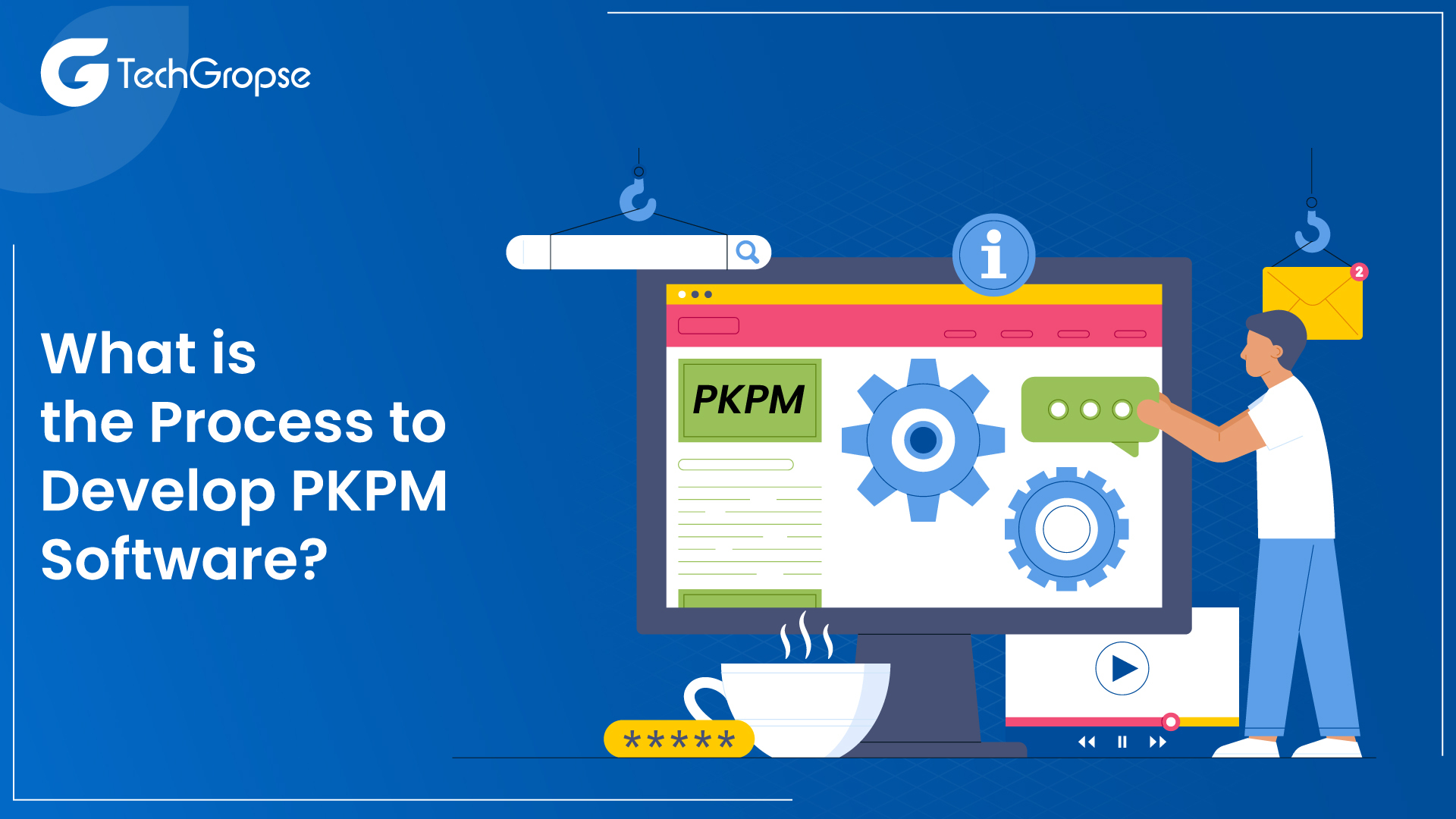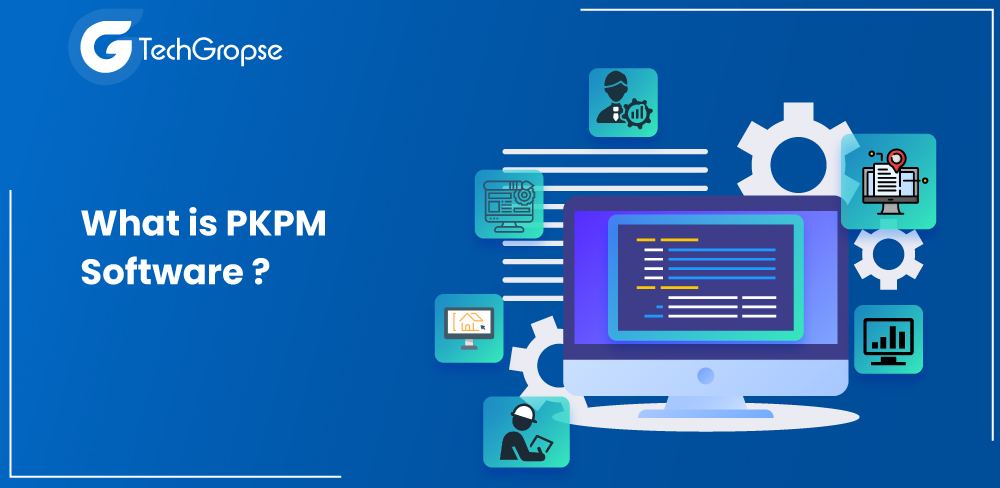PKPM Software is a widely identified structural engineering software used in China for the past 30 years. Its popularity has grown significantly in recent years because of its ability to deliver quick and accurate results for software architecture & design.
The software is essential for structural engineers and architects as it simplifies the design process by providing tools for the pre-dimensioning and pre-analysis of steel and concrete structures. PKPM is designed to calculate the maximum loads and stresses that a system can withstand before it fails.
PKPM design software is essential for ensuring the safety and stability of buildings and infrastructure projects. The software offers comprehensive analysis and design output, including stress diagrams, moment diagrams, and loading calculations.
PKPM is known for its powerful features, reflexive user interface, and flexibility to serve different requirements of the construction industry. It keeps up with the industry’s needs, updates the standards, and develops software products that significantly impact the industry.
This post will provide an in-depth overview of PKPM Software, its features, and benefits, how it works, its applications, advantages over traditional methods, training and support options, and the future of PKPM Software in the construction industry.
Introduction to PKPM Software
PKPM (Pre-Dimensioning and Pre-Analysis Modular) Software is a structural analysis and design program developed by China Construction Technology Group (CCTG) for building and infrastructure projects.
It is one of China’s most widely used structural design and analysis software and is compatible with advanced Chinese design codes and standards. PKPM has become popular in the construction industry because of its accuracy, ease of use, and comprehensive analysis capabilities.
PKPM Software was first developed in the late 1980s by researchers from Tsinghua University and the China Academy of Building Research. It was designed to address the requirement for reliable and efficient structural engineering analysis and design software.
Since its beginning, PKPM software has experienced various updates and improvements, adding more features and capabilities to satisfy the growing needs of the engineering community. Today, it is one of China’s most widely used architecting software.
Let’s spread love in the air to build a dating app with our experts dating app developers
Why PKPM software is Essential?
This software is used to design and analyze prestressed concrete structures, which are used extensively in the construction industry. There are various reasons why PKPM software is essential to the construction industry.
- PKPM structural design software allows users to execute complicated calculations easily and quickly. This is essential in the design of large and cultured structures, where accurate calculations are critical. These calculations ensure that the system will be safe, durable, and cost-effective.
- PKPM software includes templates and predefined designs for structures like bridges, buildings, and parking structures. The software also allows for the creation of detailed 3D models, which can be used to visualize the final product.
- It helps to improve collaboration and communication among construction professionals. The software allows designers, engineers, and contractors to share their designs and calculations, enabling them to work together as a team. This means everyone can stay on the same page, share information quickly, and identify potential issues before they become problems.
- PKPM software can save time and money in the construction process. By using the software to model and analyze structures, engineers can identify potential issues and optimize designs before construction starts. This means problems can be identified early on before they become expensive. Additionally, the software allows the creation of accurate material and cost estimations, which can help construction professionals to build realistic project budgets.
- Finally, PKPM software plays a crucial role in maintaining safety standards in the construction industry. By ensuring that structures are designed according to strict standards and regulations, the software helps to reduce the risk of accidents and injuries on construction sites.
How PKPM Software Works?
PKPM software, or Chinese Structural Engineering Design Software, is a powerful and versatile structural engineering tool used in China. It is frequently used by engineers and architecting software to design, analyze, and create project reports for various types of buildings, including commercial, industrial, residential, and high-rise structures.
1. PKPM Software Architecture
It is built on a modular architecture that seamlessly integrates various modules. The software uses advanced algorithms and numerical methods to perform structural analysis and design.
2. Data Input, Processing, and Output
PKPM software architectures accept data in different formats, like CAD files and BIM models, and use a graphical user interface to facilitate data input and output. The software processes data using advanced algorithms and offers users detailed reports and visualizations of the results.
3. User Interface and User Experience
PKPM software offers a user-friendly interface with intuitive controls and features. The software is designed to be easy for both beginner and experienced users and delivers a range of customization options to suit various requirements and preferences.
What is the Process to Develop PKPM Software?

By following the below process, engineering firms can improve the quality and effectiveness of their PKPM software, providing better results for their clients.
1. Understanding the User Requirements
To build a successful PKPM software, understanding the user requirements is essential. This involves gathering information about the structures that will be analyzed and designed, the input parameters required, and the types of outputs needed.
Once the user requirements have been collected, they have to be structured in a clear and understandable way. This involves organizing the details into categories like input requirements, output requirements, and analysis methods.
2. Designing the PKPM Software Architecture
The structural design of the PKPM software involves defining the software’s building blocks, modules, and components. This involves creating a high-level architecture that defines the software’s overall structure and how the various parts interact.
The functional design of the PKPM software involves defining the software’s functionality, including the algorithms and equations used for analysis and design. This involves creating a detailed plan that specifies how the software will perform its functions.
3. Creating a Development Plan
After the architecture and design of the PKPM software have been defined, creating a development plan is crucial. This involves breaking down the development process into smaller tasks and estimating the time and resources required to complete each task.
4. Testing and Quality Assurance Process
Testing and quality assurance are essential components of the PKPM software development process. They help ensure that the software performs as intended, is reliable and free of issues, and meets user requirements. Here are the different types of testing and how they are carried out as part of the PKPM software development process.
Advantages of PKPM Software over Traditional Methods
If you are in the construction industry, you even heard about PKPM software. But what is it, and why is it popular nowadays? PKPM is an architecting software tool for structural analysis and design in building projects. Here are some of the advantages PKPM software offers over traditional methods.
- Speed and Efficiency: PKPM software can complete complex structural calculations and designs within minutes, whereas traditional methods could take hours or even days. This time-saving feature allows engineers and architects to be more efficient with their time and deliver projects quicker.
- Accuracy and Precision: PKPM software uses advanced algorithms and formulas to ensure precise and accurate structural designs. This level of accuracy can help prevent costly mistakes and ensure the safety of the building.
- Flexibility and Customization: PKPM software allows for greater flexibility and customization in structural design. Engineers can adjust and modify plans quickly and easily, making it simpler to adapt to changes in the construction process.
Essential Key Features Must Have in PKPM Software
As discussed above, the software uses advanced algorithms, calculation tools, optimization features, and project management tools to offer valid outcomes. Analysis of essential elements that should consider in PKPM software, including:
1. Analysis and Simulation Tools
PKPM software has advanced analysis and simulation tools for modeling and testing various load and boundary conditions. The software can simulate and analyze the effects of static and dynamic loads like wind, earthquake, and temperature variations. The software can also perform nonlinear analysis, such as large deformations, material nonlinearity, and geometric nonlinearity.
2. Structural Design Capabilities
The software allows users to input different design parameters, including load conditions, material properties, and design codes, and develops optimal designs that satisfy the specified needs. The software also has features for designing complex structural elements, such as curved beams, trusses, and frames.
3. Ease of Use
An easy, user-friendly interface allows users to quickly and easily access different tools and features. The software delivers a clear and concise layout with well-organized menus and toolbars. The software also includes helpful hints and tips that guide users through the design and analysis process.
4. Reporting and Documentation Functions
It provides detailed reports and documentation functions that allow users to create professional-quality reports and drawings for their projects. The software can generate detailed design reports, including stress analysis, deflection analysis, and deformation analysis, which can be customized to meet specific project requirements. The software also allows users to create detailed drawings, including 2D and 3D models, plans, and elevations.
5. Efficient Workflow and Project Management
PKPM software features an efficient workflow and project management system that allows users to manage numerous projects and tasks simultaneously. The software includes features for managing project timelines, files, and resources, enabling users to monitor progress and collaborate with team members.
6. Error Checking and Prevention
It features advanced error-checking and prevention tools that help users recognize and fix all errors and inconsistencies. The software also detects input errors, boundary errors, and calculation errors. It provides helpful tips and suggestions for correcting and avoiding these errors.
7. Validation and Verification Processes
PKPM software undergoes validation and verification processes that ensure its accuracy and reliability. The software is tested against real-world scenarios and compared to other industry-standard software programs to validate its final outcomes. The software is also updated regularly to ensure compliance with the latest regulations and standards.
8. Flexibility and Customization Options
For PKPM (Structure Analysis and Design) software to be truly effective, it must have flexibility and customization options that can adapt to various building types. This means that the software should have the ability to handle multiple sizes, shapes, and materials of structures with ease. Additionally, customizable input parameters and assumptions are necessary for engineers to modify results and make informed decisions.
9. Integration with Other Software
PKPM software should integrate with other software to streamline workflow and improve efficiency. Compatibility with CAD and BIM programs is essential for architects and engineers to make 3D models of buildings and structures. Interoperability with analysis and design tools like FEA (Finite Element Analysis) and SAP2000 (software commonly used for structural analysis) also assists engineers in performing complex calculations. Data sharing and collaboration features are crucial for team-based projects, which frequently require input from multiple parties.
10. Technical Support and Maintenance
The best PKPM software must have comprehensive technical support and maintenance options. Help desk and training services should be readily available to users needing assistance understanding the software. Regular software updates and upgrades are essential to ensure that the software stays current, compatible with the latest technology, and optimized for performance. Bug fixes and troubleshooting options should also be offered to ensure that any errors or issues are addressed promptly.
Also Read, Our Chicago-Based Mobile App Development Company
Most Popular Applications of PKPM Software
Many civil engineers and construction professionals frequently use architecting software. It allows for accurate calculations, efficient design and modeling, improved collaboration, cost and time savings, and enhanced safety standards.
With its many benefits, PKPM software is a crucial asset to the construction industry, helping to ensure that its structures are safe, durable, and fit for purpose.
1. Structural Analysis and Design
PKPM software is widely used for structural analysis and design of different structures, including buildings, bridges, and towers.
2. Building Information Modeling (BIM)
PKPM software offers BIM capabilities, allowing users to make, manage, and share digital models of buildings and structures.
3. Bridge Engineering
PKPM software provides technical features for bridge engineering, such as dynamic, seismic, and wind analysis. It is used to design and analyze both standard and complex bridge structures.
Future Developments in PKPM Software
PKPM software has come a long way over the past few years, but there are still opportunities for development and advancement. Advancements in structural analysis and design can lead to more complete, accurate results.
Innovations in user interface and experience can make the software more intuitive and user-friendly. Integration with artificial intelligence and machine learning can transform the way engineers conduct structural analysis and design, automating tasks and offering valuable insights that would otherwise be impossible to obtain. These developments will help engineers build safer, more efficient, and sustainable structures.
Final Thought
PKPM is an Architectural Engineering Software System that can be a valuable tool for structural engineers and construction professionals. Still, choosing the right software with the necessary features is essential.
From user-friendly interfaces to accurate calculations and results, flexibility, integration, and future developments, the features covered in this article can help you make an informed decision when choosing your PKPM software.
With the right software, you can streamline your workflow, enhance project management, and enhance overall performance in structural engineering and construction projects.
FAQ: What is PKPM Software
1. What is PKPM software?
PKPM stands for “Practical Structural Design and Construction Software.” It is a software program used by structural engineers and construction professionals to analyze, design, and document building structures.
2. What are the essential features of PKPM software?
Essential features of PKPM software include structural design capabilities, analysis and simulation tools, reporting and documentation functions, user-friendly interface and ease of use, accuracy in calculations, flexibility and customization options, integration with other software, and technical support and maintenance.
3. How does PKPM software help streamline workflow and improve project management?
PKPM software can help streamline workflow by providing precise and concise output, efficient project management tools, and customizable input parameters. It can also help improve project management by enabling data sharing and collaboration features, reducing errors and rework, and enhancing overall performance in structural engineering and construction projects.
4. What should I consider when choosing PKPM software?
When choosing PKPM software, it is crucial to consider the essential features that meet your specific engineering needs, the compatibility with other software programs, and the quality of technical support and maintenance. Considering the cost and licensing options and the software’s future developments and innovations is also necessary.
PKPM software is a powerful tool for structural design and analysis. If you’re developing apps for engineering or construction, partnering with a skilled mobile app development company in San Francisco, Atlanta, Chicago, Los Angeles, Houston, Dallas, New York, or Texas can help you integrate such tools into your solutions effectively.

Hello All,
Aman Mishra has years of experience in the IT industry. His passion for helping people in all aspects of mobile app development. Therefore, He write several blogs that help the readers to get the appropriate information about mobile app development trends, technology, and many other aspects.In addition to providing mobile app development services in USA, he also provides maintenance & support services for businesses of all sizes. He tried to solve all their readers’ queries and ensure that the given information would be helpful for them.











